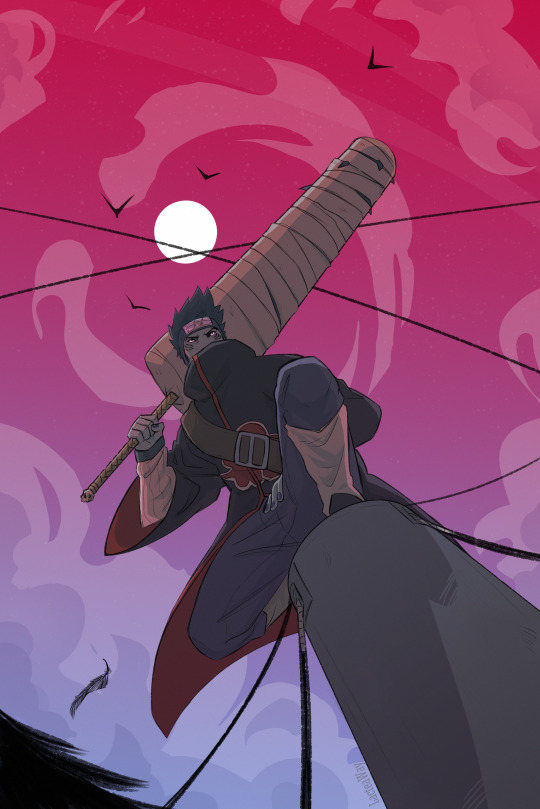Photo

KAKATTE KOI !! 🍈🍒
—
its been a while since i did a piece as big as this since i hadnt had the confidence to do anything more than busts, but i really like how exaggerated and cool the sprites in hftf look and i guess it just kinda inspired me to attempt a bigger crop and draw one of the sprites !! im actually happy with the colours, i really like the saturated pastelish colours and from my experience with working with light colours, i did not expect it to go this well :)c
4K notes
·
View notes
Text

Noragami Final volume 27 cover
#AAAAAAAAAAAAAAAAAAAAAAAAAAAAAAAAAAAAAAAAAAAAAAAA#this is so beautiful I wanna cry#noragami spoilers#noragami
132 notes
·
View notes
Text
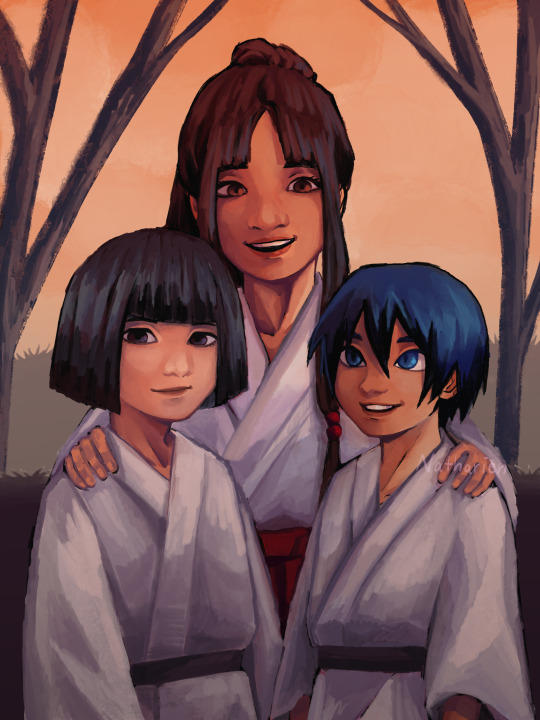
AU where Trash Dad dies very early (the better version) OR he and Sakura somehow agree on co-parenting or something (the worse but maybe more fun version).
Noragami is ending and I’m not ready for it :’(
#yato#yaboku#mizuchi#sakura noragami#noragami#nora noragami#I hope they'll stop calling her that in the last chapter otherwise I'll be pissed#my art
70 notes
·
View notes
Text
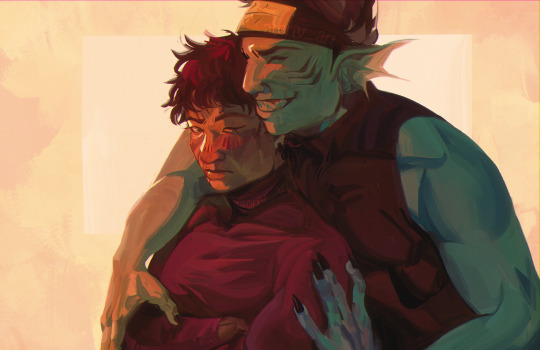
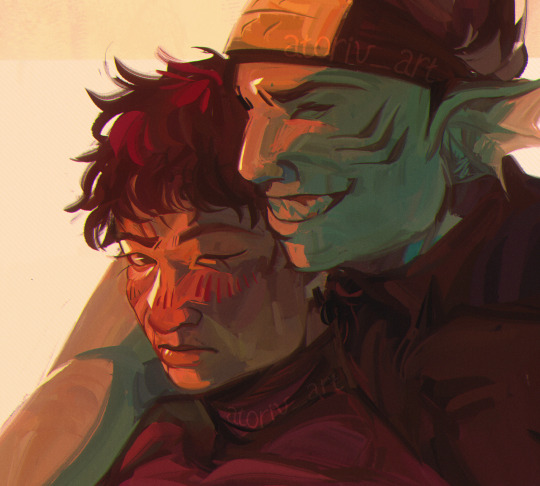
closest allies
504 notes
·
View notes
Text



Gojo Satoru from Jujutsu Kaisen
I finished it hehe
19 notes
·
View notes
Text
You ppl have to tell me why in the tags
#Kimimaro#It's difficult to determine who 'deserved better' bc it kinda turns their trauma into a competition#But all of the other characters were at least able to grow into adults (excluding Haku but he's mentioned with Zabuza so...)#Kimimaro died with 15 and was a prisoner his entire life (first to his clan and then to Orochimaru)#(even if Kimi probably wouldn't think like that but he was definitely just one of Oro's pawns there)#Anyway his situation is similar to Haku's but because of the addition of Zabuza I can't really vote for him if that makes sense?#Kabuto is similar (at Oro's mercy) but he was able to grow up and get away from him#Tsunade and Madara were able to grow old and make good memories among the bad ones#And Kisame was able to grow up and live for what he believed was right and was able to make his own choices#Gaara and Zabuza too#All of these characters managed to make their own choices in the end and grew into adults#Which is why I'd choose Kimimaro and/or Haku who weren't even allowed to live past the age 15#Naruto#Like... trauma-wise I have no idea on who deserved better. But no child deserves to die
104 notes
·
View notes
Text
Behold our winners!
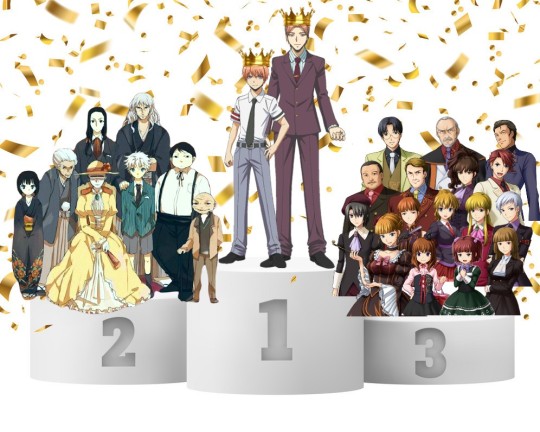
In third place, the Ushiromiya family, from Umineko When They Cry!
In second place, the Zoldycks from Hunter x Hunter!
And our first place winners are the Asanos, from Assassination Classroom!
Congratulations to Gakuhou and Gakushuu Asano for being voted the most dysfunctional family! With only two inital submissions and not being the main characters of their media, these two may have been underestimated but in round after round, they kept going, beating a series of popular oponents and larger families. Their dysfunction strikes a chord in many people, winning a place in their heart and on the podium.
This tournament has made these past four months a little more interesting for me, and I hope for all of you as well! It wouldn't have been the same without all of your engagement. I had a delightful time reading your comments, reblogs, and messages. Thank you for submitting, voting, writing propaganda, and being part of this wild ride.
52 notes
·
View notes
Text

#noragami spoilers#noragami#hiyori#this is so pretty#I'm still crying over the last chapter#over the entire manga really#but this is really beautiful <3
717 notes
·
View notes
Text
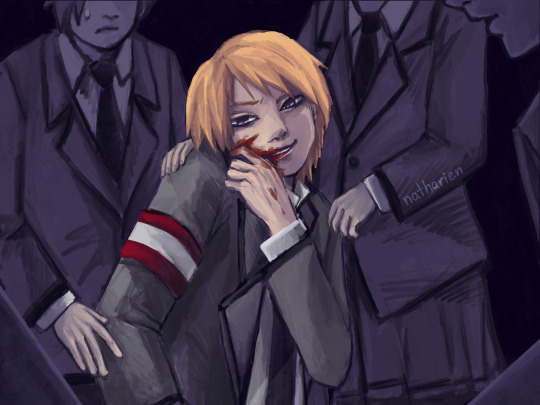
That classroom yeet scene
82 notes
·
View notes
Text

506 notes
·
View notes
Text



This is a bit of a personal rant, I'm pretty sure everyone knows more or less where I stand reggarding the Naruto dads, but the point is... Fugaku deserved better!
1K notes
·
View notes
Text
The Creation of the Uchiha outcaste-order: the significance in their relocation and duty within the KPD framework (Pt.1)
Assigning the Uchiha to police the village (and by extension having them superintend both the prison system and KMPF), isn't the concession the pro Tobirama crowd would make it out to be.
I've taken the liberty of selecting a few iconic phrases used in certain bloggers' metas, and tweaking them here and there:
In an effort to reduce the distance between the community and the Uchiha, Tobirama gave them control of the police force.
When Uchiha supporters attempt to attribute Tpbirama's role in the Uchiha being arrogant and bad cops, you know they are illiterate.. As if it's Tobirama's responsibility to instill moral character in them!
No amount of discourse can make the law enforcement / KPD some malicious scheme to oppress them (the Uchiha) since it is an intrinsically strong position in every community.
The Uchiha were haughty, dishonest police. Let the police take responsibility. Even Orochimaru could see that the Uchiha were dishonest and corrupt.
I detest this conviction that Tobirama's establishment of the Konoha Police Force and having placed the Uchiha in charge of its supervision was some brave and peaceful endeavour, as if it were the epitome of the wise leader's deeds, because it's fundamentally flawed - at a conceptual level, it's quite simple to debunk Tobirama's ostensible moral superiority in this, but this isn't what I'm endeavouring in this specific part 1 meta; rather, I'd like to tackle the matter by piecing together a series of historical notions that serve as parallels to the Narutoverse.
I've already spoken amply of my interpretation of Tobirama's character and how his actions profoundly reflect the Fascist ideology here, here and here, just in case it slipped anyone's attention — Konoha is far from representing a just system and as it lacks the basic attributes of what it means to be "good", which can be interpreted in various ways, the most striking being that it's just a better-oiled war-machine as opposed to the feuding clan system. And that's Tobirama's doing, mind you.
So what exactly occurred with the Uchiha and how were they rendered an outcaste-order?
Now, there's a fascinating significance in the notion that the Uchiha were forcefully stationed at the margins of the village, in proximity of the Leaf's prison, as stated by Orochimaru (a notion partially confirmed by Obito, though his testimony is a little fickle):

Kishimoto was truly brilliant in the ways in which he mapped out striking parallels between the Universe he created and shinto and buddhist mythos - And It's no secret that Kishimoto drew much of his inspiration directly from medieval Japanese history: exaltation of Bushido code of honour practices, heavy references to the Edo period, to the Meiji restoration, and so on and so forth... And this is where another fascinating theme correlates to the Narutoverse and specifically the Uchiha.
I'd like to thank @komehyappyou for providing wonderful information and giving me the input to write this short meta!
Introduction
Throughout its history, Japanese culture has stigmatised particular groups of persons or professions as "defiled," or as being below the majority and removed from society. Groups that have been labeled as "polluted" or "base" have done so in accordance with a variety of overlapping, historically varied, though occasionally contradicting criteria — However, one particular cause of marginalisation is indisputable: prejudice was formalised and supported by governmental power, creating inflexible, caste-like classifications.
So instead of focusing on hygiene, purported binary structures in the "Japanese mind," or the eternal truths of Buddhist or Shinto doctrine, one must first examine historically evolving political, economic, and sociocultural forces in order to understand why some people were labeled as vile, contaminated, outside of society, or even "nonhuman."
Kawaramono, Kawata and Eta : discriminants and descriminative epiteths
One particular classification struck me: the "riverbed person(s)" (kawaramono or kawara no mono, who were mainly distinguished as leather artisans), constitutes a genre of discriminated people, frequently seen in medieval texts, notably during the Muromachi period; Kawata people, similarly, can be classified as a kawaramono subgroup.
And while this may be a conceptual forcing of interpretations, done by yours truly, I do think it's quite uncanny that Madara and Hashirama's first encounter would occur by... a river:

Eta/Kawata people were frequently associated with hunting, and, by extension, falconry - and in fact, because of the syncretic religious ideas that developed during these times, killing an animal was connected with ritual impurity, therefor guilds that relied on it for their livelihoods were socially and physically segregated from "legitimate" society. Eta was hence the name given to such outcasts.
In medieval writings, "kawaramono" and "hinin" (another marginalised group that loosely translates to "nonhuman") were not always legally, politically, or ideologically distinct from people who lived in "sanjo" ("scattered" or marginal areas) or from a number of other types whose names vary depending on the era and local customs —The term "eta" (sometimes [y]etta, or enta), which was frequently written with the characters "much pollution," especially after the fifteenth century, and which served as a particularly insulting epithet applied primarily to "kawaramono," suggests that at least some outcasts were subject to gradually increasing levels of discrimination.
Relocation
Economic factors during the late medieval period also contributed to their unfair treatment; tanners and leather artisans (specifically Kawata) had been in high demand by military houses during the lengthy civil wars.
Furthermore, influential warlords and powerful Buddhist temples attempted to ensure a constant supply of leather goods for their armies beginning in the sixteenth century at the latest by giving monopoly rights and privileges to leather makers and leather artists.
However, these obligations and benefits distinguished the kawata from the general populace, who were already frequently associated with discriminatory sorts of kawaramono due to their line of work.
Differences between 'kawata' and "majority society" were fortified when they were relocated to the outskirts of town, where they could more easily be delimited, measured and exploited.
During the Edo period, those who resided on the periphery of a community, in proximity of the prison system, became in fact known as Eta 穢多 (impure) or 非人 "nonhuman".
Kawata as prison guards and executioners
This is the most striking correlation of them all: Kawata were forced to work as executioners or prison guards, which further deepened the rift that separated them from the common majority.
"Majority society," which had for centuries been fed on Buddhist notions regarding the sinfulness of butchering, Shinto taboos on death and pollution, and political ideologies in which the supposed "purity" of the imperial house was used to support the authority of military regimes, was only too happy to relegate the kawata to a position of subordination.
Many of the official tasks of kawata/eta came to be associated with prehistoric ideas of "pollution," such as skinning and disposing of dead animals, executing prisoners, maintaining the bakufu jail secure and clean, working at the two tame, transporting prisoners, capturing illegal beggars, tattooing prisoners, and parading them through town.
The following screenshot is from a conversation with @komehyappyo:

Kawata/eta were hence attributed the role of "unclean work" by the shogunate in order to divert resentment away from the government and towards them instead, as they were also known as "dogs of the government" (a historical phrase for low level police personnel who patrol, apprehend criminals, prison guards, and execute executions).
Surely, surely, just about anyone can see the similitudes to the Uchiha, through this comparison? The Uchiha serve as a stand-in metaphor of the marginalised Kawata/Eta groups, ethnicities that suffered severe forms of ostracisation well into modern times!
I hope this debunks the assumption that the Uchiha, despite having been assigned to a function that exerted authority, didn't possess any authority at all: it was all just a ruse, an artifice to have them confined in an exploitable role, one that was subject to constant surveillance and curtailing as they were quite literally considered impure (CoH anyone?)
What this means is that, yes, societal schisms are often relevant, but such divisions aren't a sufficient condition to become precursors of genocide - State action is always essential in transforming ingrained beliefs about group dominance or differences into systematic butchery of an ethnic group of people.
379 notes
·
View notes
Text

I’m your biggest fan I’ll follow you until you love me 🫀🥽
76 notes
·
View notes
Text
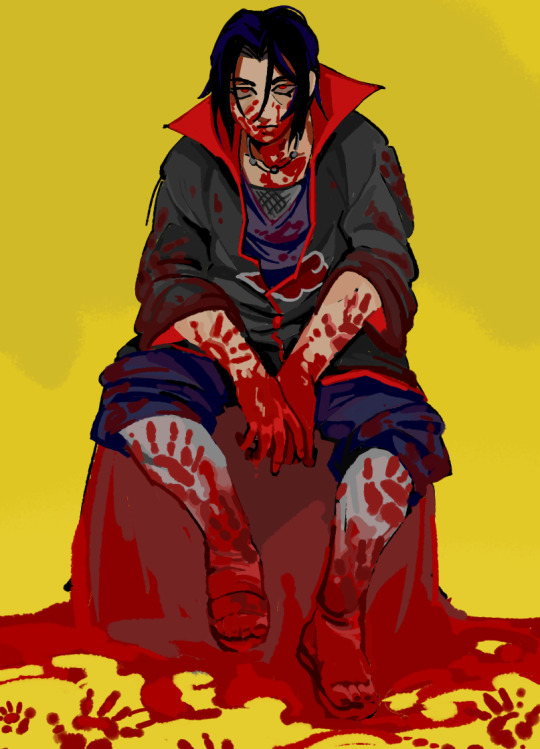
seven new ways that you can eat your young
4K notes
·
View notes


